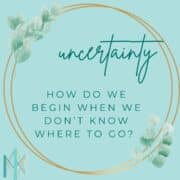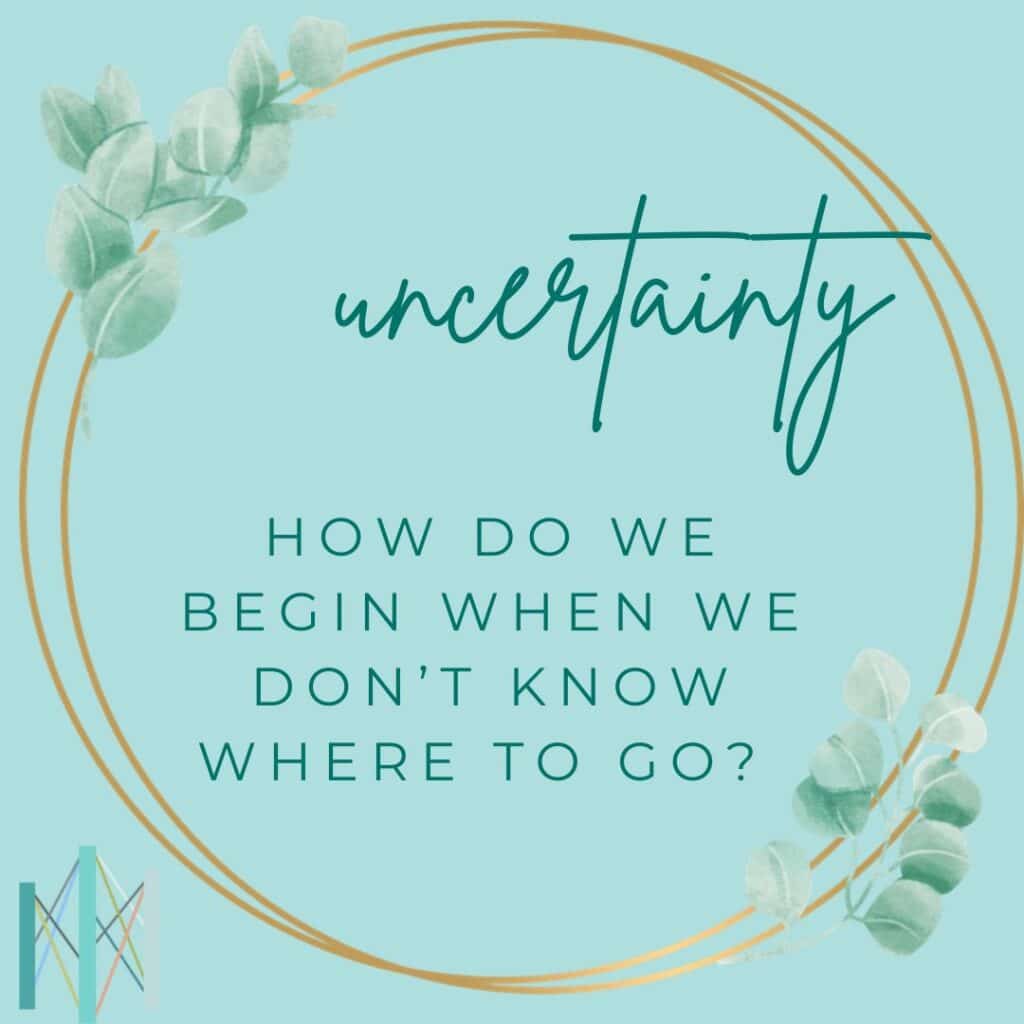

This is a post from associate therapist Corinne Crone. Corinne is a West Marin, California therapist who uses relational, transpersonal and integrative approaches to working with clients on challenges including trauma, life transitions, grief, existential themes such as meaning and purpose, spiritual inquiry, and non-ordinary states. You can learn more about Corinne from our recent therapist interview.
How Do We Begin When We Don’t Know Where to Go?
Making Space for Uncertainty in Uncertain Times
What do we do when we find ourselves in unfamiliar terrain—when the way forward isn’t clear, and nothing in us quite knows how to proceed?
These moments often arrive as tension in the chest, a loss of energy, a quiet nagging that something isn’t right. And while they may not always make sense at first, they carry information. They ask for our attention.
In my work as a therapist, I’ve come to see these moments not as detours from the path, but as part of it. They invite us to slow down and listen–not just to our thoughts, but to the quieter signals in the body and the stories we tell ourselves in response.
In therapy, we begin by paying attention to what feels out of step. The moments of tightening, withdrawing, overriding. These patterns often emerge when we’ve learned to cope by moving away from what’s uncomfortable–even when it’s something important.
My current supervisor, Andre Decarey, speaks to this with clarity. When we’re uncertain, when we don’t yet know what’s true for us, we’re being invited to notice what is untrue. What doesn’t sit right. What creates distance from ourselves and from others. It’s a shift in orientation–from seeking answers to gently questioning what’s misaligned.
Andre offers the frame of the ‘seeker of untruth’–not as a role to perform, but as a way of being with ourselves that allows more of our experience to come into view. And that view often begins in the body. A pause. A breath held a little too long. A subtle tension.
This kind of noticing takes time.
We’re not trying to fix anything or force clarity. Instead, we’re learning to stay present with what’s here–even if it’s incomplete, even if it doesn’t resolve right away. With enough trust and spaciousness, the next step often begins to reveal itself.
One of the first questions Andre asked me was: Do you agree that life is both joy and pain?
That question reverberates for me still. Because if we agree, as he suggests, then it follows that much of our suffering comes not from the presence of pain itself, but from our struggle to accept it. From our efforts to chase joy while turning away from pain, and in doing so, stepping out of relationship with what’s real.
When we resist what’s here, we lose touch with reality. We drift into the future, toward some imagined version of life where we’ll finally feel okay. We go into if, then thinking. If this moment would only be different, then I will _________. Fill in the blank. But healing doesn’t happen in that future. It happens now, in the truth of the experience we’re already having.
This is where the practice of the seeker of untruth takes root. Not in naming some absolute Truth, but in noticing what is no longer true for us. And that noticing, quiet as it may be, begins to make space for something new to emerge.
In the therapy room, I try to offer a space where that process feels possible. It often begins subtly. A breath softens. A word catches in the throat. Something in the room shifts. These are the moments I’ve come to trust.
Over time, people begin to recognise what’s been there all along. They find their own language, their own timing, their own way back into themselves. The process isn’t about giving answers–it’s about creating conditions where someone can begin to hear their own.
There’s something about the right kind of space–gentle, attuned, grounded–that allows what’s been hidden to come forward.
And in the quiet work of noticing what no longer serves, we begin to remember something simple and essential: that just like the body, the psyche carries its own wisdom–and when met with care and presence, it moves not only toward healing, but toward connection–back into relationship with ourselves, and with others. It is from this place that we can find our way home.
Are you interested in learning more about working with Corinne Crone? You can contact her directly at [email protected], Phone: 541.655.3590, corinnecrone.com. You can also contact us at Center for Mindful Psychotherapy with inquiries.


